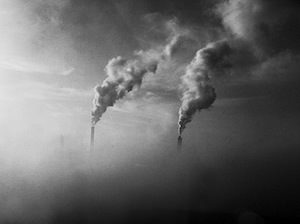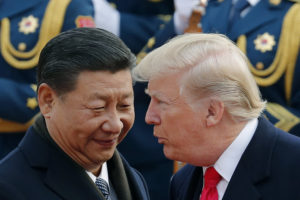Asia Cuts Carbon Faster Than Europe
East Asian countries are showing the most progress in reducing the carbon intensity of their economies, leaving their competitors in Europe and the U.S. in their dust.
By Alex Kirby, Climate News NetworkThis piece first appeared at Climate News Network.
LONDON — When it comes to prowess in moving towards a low-carbon economy, some countries in Asia are increasingly outpacing Europe and the United States, a new report shows.
Three of the top G20 countries best placed to compete in the global low-carbon economy are now from East Asia, having overtaken their European and American competitors, according to an index which measures how carbon-competitive countries are.
The report, the Climate Institute/GE Low-Carbon Competitiveness Index, published by the Climate Institute, was first released in 2009. This year’s edition relies on data from 2010.
In that year France, the UK and Germany were placed first, third and fifth. Today France is still in first place (thanks largely to its heavy reliance on nuclear power to generate electricity) but the UK has slipped down while Germany, sixth, is out of the top group.
Meanwhile China leapt ahead of its previous placing, and South Korea and Japan continued their strong performance. China is now third, up from seventh.
This is despite China now having supplanted the US as the world’s biggest emitter of greenhouse gases. Though China’s growth in renewables is impressive, its power sector still relies overwhelmingly on coal, with construction of coal-fired power stations continuing at breakneck pace: the country now accounts for nearly 50% of global coal consumption.
The Index measures carbon competitiveness by examining 19 indicators in three areas: sectoral composition (a historical snapshot of the current economy, for example transport and trade emissions intensity); early preparedness (like investment in clean energy and growth in emissions); and future prosperity (e.g. investment in education and infrastructure).
It includes indicators such as industrial efficiency, financial flows into clean-energy production, carbon intensity of trade, and natural-capital depletion.
“Asia, particularly China, is building the capability to prosper in the inevitable low-carbon and clean energy future”, said John Connor, CEO of the Climate Institute, based in Sydney, Australia.
“China’s dramatic improvement is due to its growing investment in clean energy coupled with growing high-tech exports. In 2010 alone, China hosted just under half of total global public equity investment in clean energy.”
Connor added: “Leaders in the global low-carbon economy are those countries which have recognised the inextricable link between economic growth, resource security and climate change and are acting accordingly.
“Despite the economic downturn, a number of EU countries have managed to hold on to their relatively good position to compete in the global low-carbon economy. However, Asian countries, particularly China, are beginning to threaten the EU’s position as a low-carbon leader.”
The report makes it clear that countries which fail to limit carbon emissions and simply pursue economic progress regardless of the pollution they cause risk being left behind, economically and diplomatically as well.
Key findings from the Low-Carbon Competitiveness Index show that the top five countries are France, Japan, China, South Korea and the UK (in descending order).
China has moved from seventh place to third. Germany dropped out of the top five and is now sixth because of decreased investment in clean energy.
The report says the most dramatic decline in performance was achieved by the United States, now down from eighth to eleventh. It says this is mainly because of decreased investment in clean energy, a falling share of high-tech exports, decreased investment in physical capital and growing emissions-intensive air freight.
A blogger on the website China Dialogue wrote in May 2012: “Our future world will be one in which the right to produce emissions will become a scarce and valuable resource, just like minerals, fertile soil, water, financial capital and skilled workers. Countries with higher levels of carbon productivity will be better-placed to provide material prosperity to their residents.
“How each nation adapts to a carbon-constrained world will, to an extent, determine its future economic competitiveness and ability to create prosperity for its residents. Economies that can generate more wealth with less carbon will be the low-carbon winners.”
Your support matters…Independent journalism is under threat and overshadowed by heavily funded mainstream media.
You can help level the playing field. Become a member.
Your tax-deductible contribution keeps us digging beneath the headlines to give you thought-provoking, investigative reporting and analysis that unearths what's really happening- without compromise.
Give today to support our courageous, independent journalists.






You need to be a supporter to comment.
There are currently no responses to this article.
Be the first to respond.